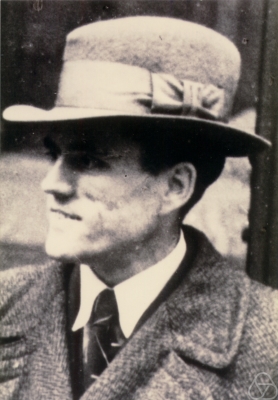<Back to Index>
- Mathematician Gerhard Karl Erich Gentzen, 1909
- Painter Maria Konstantinovna Bashkirtseva, 1858
- President of Portugal António Óscar Fragoso Carmona, 1869
PAGE SPONSOR

Gerhard Karl Erich Gentzen (November 24, 1909, Greifswald, Germany – August 4, 1945, Prague, Czechoslovakia) was a German mathematician and logician. He had his major contributions in the foundation of mathematics, proof theory, especially on natural deduction and sequent calculus. He died in 1945 after the Second World War, because he was deprived of food after being arrested in Prague.
Gentzen was a student of Paul Bernays at the University of Göttingen. Bernays was fired as "non-Aryan" in April 1933 and therefore Hermann Weyl formally acted as his supervisor. At great risk to his career Gentzen kept in contact with Bernays until the beginning of the Second World War. In November 1933, he joined the Sturmabteilung to pass the state exam for teachers. In 1935, he corresponded with Abraham Fraenkel from Jerusalem and was implicated by the Nazi teachers' union as one who "keeps contacts to the Chosen People." In 1935 and 1936, Hermann Weyl, head of the Göttingen mathematics department in 1933 until his resignation under Nazi pressure, made strong efforts to bring him to the Institute for Advanced Study in Princeton.
Between November 1935 and 1939 he was an assistant of David Hilbert in Göttingen. To be able to take part in a congress in Paris in 1937, he had to join the NSDAP. One of Gentzen's papers had a second publication in the ill famed Deutsche Mathematik that was founded by Ludwig Bieberbach who promoted "Aryan" mathematics.
From 1943 he was a teacher at the University of Prague. After the war he starved to death in Prague, after being arrested like all other Germans in Prague on May 7, 1945 and deprived of food.
Gentzen's main work was on the foundations of mathematics, in proof theory, specifically natural deduction and the sequent calculus. His cut elimination theorem is the cornerstone of proof theoretic semantics, and some philosophical remarks in his "Investigations into Logical Deduction", together with Ludwig Wittgenstein's aphorism that "meaning is use", constitute the starting point for inferential role semantics.
Gentzen proved the consistency of the Peano axioms in a paper published in 1936. In his Habilitationsschrift, finished in 1939, he determined the proof theoretical strength of Peano arithmetic. This was done by a direct proof of the unprovability of the principle of transfinite induction, used in his 1936 proof of consistency, within Peano arithmetic. The principle can, however, be expressed in arithmetic, so that a direct proof of Gödel's incompleteness theorem followed. Gödel used an artificial coding procedure to construct an unprovable formula of arithmetic. Gentzen's proof was published in 1943 and marked the beginning of ordinal proof theory.